For several weeks in a row people of all races have crowded the streets of Huntington, sidewalk to sidewalk, calling for an end to prejudice.
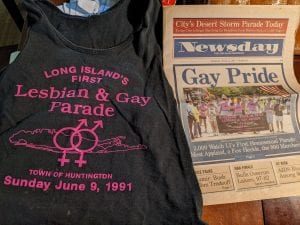
Those same streets in Huntington village have held other marches, but one started just under 30 years ago still holds unique significance today. Go back to June 9, 1991, the sky was open blue while the sun blazed down on people who also marched through Huntington against prejudice. It was a time of oversized glasses, poofy hair and tees tucked into jeans. Many marched with rainbow flags in their hands and pride on their faces, but some also reportedly marched with bags over their heads. It wasn’t a fashion statement, it was a way to hide their identities during a time when many people in the LGBT community would be retaliated against at the workplace or even at home.
About 800 people stood between close to 3,000, according to what journalists wrote at the time. Most cheered for the marchers, but others screamed at them, warning of eternal damnation and holding signs reading, among other expletives, “Kill Yourself.” SWAT teams lined the surrounding roofs because there had been threats of violence toward the marchers.
It was June 10, 1991, when the first Long Island LGBT-led parade strode through Huntington. Marchers shouted “We’re here. We’re queer. Get used to it.” That parade would be a landmark day for the LGBTQ community on Long Island, but for the people who marched, it meant much more than that.
“It was the proudest day of my entire life,” said Leah Gustavson, a Rocky Point resident and one of the original members of the committee who established the parade. “I felt like we started something, stuck to it and got to an end goal.”
That parade took place 24 years before the U.S. Supreme Court gave gay people the right to marry. It was 29 years before the court confirmed it was unconstitutional for businesses to discriminate against people on the basis of sex, a huge boon to the LGBTQ community, which has long experienced discrimination when applying for jobs and in the workplace.
But getting it together would take months of backbreaking effort destroying barriers, including taking a Long Island town to federal court to win their right to assemble.
Today, as protests and marches have broken out at every corner of the U.S., the memories of the struggle to have voices heard three decades ago adds a new perspective for those advocating for an end to prejudice. It’s a glimpse of how far Long Island has come and how far it might still have to go.
Beginnings of the March
The Lesbian/Gay Pride and Freedom Committee was established after June, nominally known as pride month, in 1990. It was after the group had attended other major pride celebrations that year, including the New York City pride parade as well as one earlier in March on St. Patrick’s Day, where members of an Irish gay and lesbian protest group led a parade before the main parade could start.
A few members of the local gay and lesbian community were having meetings at a gathering place near Stony Brook University. The school had an active LGBT scene with a school club found in the basement of the old Union building on campus. It was in a space that was once a closet, something that became an oft-used joke in the small burgeoning community.
No one who was there remembers who exactly brought up the idea, but everyone who was in that room one spring day remembers the conversation about pride parades and the simple question, why wasn’t there one on Long Island? Why didn’t they try to start one, because, after all, how hard could it be?
In that small group of likeminded people, what would become the 10-member Long Island Pride and Freedom Committee was born. Gustavson related that gung ho attitidue to a sense of ”ignorant optimism,” something that can be a powerful force, especially for people who know things need to change, and that now is the time to do it.
She, and other original members of the committee, said coming together to plan this march was a way for many of these people who have long felt marginalized on Long Island to finally show they have a voice. Even still, numerous people on the committee would only publicly go by their first name, knowing they could be retaliated against in the workplace.
“We knew we were not necessarily welcome by people, but the point wasn’t to be welcomed, we were demanding that we would have equality.”
— Steve Henaghan
Those who were there look back on it as a time that was not nearly as fraught and violent as previous decades, but there still was massive underlying prejudice toward the gay community. Steve Henaghan, of Mastic, was another of the original committee members trying to get the parade started. In the 1980s, he and other gay/lesbian rights activists helped create a political action committee called Citizens for Equal Rights PAC to raise money for candidates that would support issues of equality.
“At that time very few would come forward and say they were supporting our issues,” Henaghan said. “In 1988 and ’91 we were making inroads politically especially within the Democratic Party.”
The committee approached several places throughout the Island to hold their march. In March of ’91 they received rejections from multiple towns and villages on the Island, including both the Village of Port Jefferson and Village of Northport.
The Record, one of a few Port Jefferson area newspapers at that time, wrote about the village board rejecting the application, saying trustees felt the committee was not “locally based,” citing that it was based in Upton, though committee members argued that was simply their mailing address.
The Port Jeff mayor at the time, Harold Sheprow, was cited as referencing the controversy of that year’s gay rights group in the New York City St. Patrick’s Day Parade. Trustees argued a Sunday march would hurt businesses, create congestion and open up the village to having to host other marches. Trustee William Glass Jr. was quoted at the time as saying, “This is political with a ‘P.’”
Henaghan could not help but laugh at hearing that quote read to him again.
“It didn’t surprise us we were rejected, it angered us,” Henaghan said. “We knew we were not necessarily welcome by people, but the point wasn’t to be welcomed, we were demanding that we would have equality.”
Northport rejected the parade for similar reasons, especially citing it was policy to only permit “community based organizations” to schedule parades.
David Kilmnick was one of the original members of the LGPF Committee who now is president of the nonprofit LGBT Network, an association of nonprofits that looks to support the LGBT community on Long Island. He said if the committee didn’t end up securing a march route and permit, they were willing to do one anyway somewhere on Long Island, even if it potentially meant being arrested.
“We were told we would be arrested, we didn’t care,” he said. “It was our right to be able to do this. We were being flat out discriminated against because of our sexual orientation.”
With a number of rejections under their belts. LGPFC members knew they had to settle on one place, and that place was going to be Huntington.
Taking a Town to Court
The committee worked with police on creating a route through the town. Their original path was longer, about 1½ miles, but in speaking with Inspector Alden Berry of the Suffolk County Police Department, the group determined on a newer, shorter route that reduced the overtime cost for officers, closed only one lane of traffic and offered more protection to those demonstrating. By April 12, 1991, that route was approved by police and sent to Huntington.The group had already sent a request to the Huntington Highway Department. While they had confirmation the request was received, they didn’t hear back until after they sent out the notice of the parade route.
Huntington Highway Superintendent William Naughton, a Democrat, responded to the marchers with a letter the same day they sent in the revised route. The language used in the letter would become the basis for further legal action, one that would bring in the support of the American Civil Liberties Union.
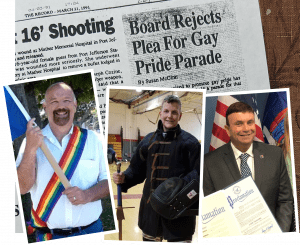
Along with citing overtime costs for the highway department and police, it said those looking to hold parades in the town should instead ask to be included in separate parades. It also read that, “Requests from several groups have been made in the past to hold additional parades, but my policy has always been to approve the traditional parades only.”
“We saw that as blatant discrimination, and we had the right just like every other group to have a march or parade,” said Kilmnick.
March planners got in contact with the New York Civil Liberties Union, which in turn picked out several attorneys to work on the issue. Two local attorneys were picked to lead the effort.
Mitchell Gittin, who is now an East Setauket resident and attorney with the Hauppauge-based Fitzgerald Law Firm, was then a volunteer on the legal committee of the NYCLU Suffolk Branch. He was tapped to lead the litigation effort alongside fellow attorney Joel Kupferman, who described himself as having been just recently out of law school back in early ’91.
“We tried to negotiate with them and asked them why they were so concerned and their reasons for denying the permit,” Kupferman said. At the time he was also a resident in Huntington. “[Huntington attorneys] said people get drunk and destroy property in these parades. I I told them we’ll concede that as soon as you stop having St. Patty’s Day parades — they were ridiculous concerns.”
The attorneys quickly noticed the language of the highway superintendent’s letter was not concurrent with basic tenets of the U.S. Constitution. Outright denying a march in line with the First Amendment because it was not one of those “traditional parades” did not stand up to scrutiny.
“That’s what was so gratifying with the case, because frankly the law was on our side,” Gittin said. “The other side didn’t have any kind of legal counterargument, you can put restrictions on gatherings … there was no reason from a logistical perspective the pride parade would have been more burdensome than any other parade — it really did come down really to discrimination.”
The attorneys sent a letter to the town May 9, but did not receive a response. Both the committee and Town of Huntington would end up in court.
The deadline of June 9 for the parade was fast approaching. In early June, both sides appeared in front of U.S. District Court Judge Leonard Wexler. Instead of a protracted back and forth, after just a few hours in court, the town agreed to grant the group a permit for the march.
Though the group did experience pushback from local elected officials there were a few that showed support, even if in small ways. New York State Sen. Jim Gaughran (D-Northport) was a Suffolk County legislator back in 1991. He said the LGPFC approached his office after being rejected by the Huntington highway superintendent. He told the assembled people that he was giving them approval to use his office’s parking lot as the end point for their parade.
“Back then there were a lot of officials who were afraid to take a stand,” he said.
Gitten said that recalling the case gives him a unique sense of pride.
“I look back on it, and not that it was a heroic thing, it was a lawyer job, I was in the right place at the right time,” he said. “It feels nice as a lawyer to look and having been part of a movement and part of a wave that’s still going on.”
The Day Of
The parade itself would be just three quarters of a mile, a short jaunt made by many pedestrians today in what is normally glowing nights on the town in historic Huntington village, or at least it was prepandemic. For the people at the march, it would be an experience none of them would ever forget.
The committee members took up positions at the head of the column. Moving up along Gerard Street, they marched down New York Avenue then turned east onto Main Street. Above them, marchers could see the hints of helmets and glint of rifles in the sunlight. SWAT snipers had been positioned on rooftops to watch over them, as there had been several threats of violence.
That was when the marchers saw the true extent of the crowds. Newsday reported at the time 3,000 people came out to see those in the parade. It was more than they expected, and surprisingly many were shouting support. Of course, there were many community members shouting at them, saying they would “go to hell” for what they were doing. Before it became well known thanks to the show “Game of Thrones,” those marching found use in shouting “shame, shame” at those heckling their procession.
“Our adrenaline was flowing so hard and strong and then we turned the corner, that’s where the protesters were,” Henaghan said. “It was like electricity was running through our bodies, we were so charged. You realize at that moment, you are not standing down, you are going to stand up. It was one of the greatest days of our lives,”
“In 30 years I will never forget that day, that day was a victory for all of Long Island.”
— David Kilmnick
There was a general sense of both exhilaration and apprehension. This was uncharted territory for them, despite participating in other pride parades. This one was theirs, and they had to own it.
“People would call it a parade, but it was a march,” Kilmnick said. “We didn’t have the pageantry, we marched down New York Avenue and had a rally in the back of Huntington Town Hall … In 30 years I will never forget that day, that day was a victory for all of Long Island.”
When they finally reached the end, the emotions of the day were overflowing.
“The relief was palpable,” Gustavson said. “People were hugging each other and cheering … A lot of people came to celebrate with us. Some of them were not gay, but a lot of them were. It was a party in the best sense of the word, it was celebratory.”
Douglas Futuyma, Stony Brook professor emeritus of evolutionary biology, was convinced to speak at the 1991 march in back of the town hall building. The professor has long been known on campus as an openly gay man, unafraid to talk about it in front of students when it came up. When it came time to speak at the rally, he wanted to talk about things beyond the biology of it, that gays and lesbians did not simply choose to be so, they were born that way. He spoke of Huntington’s native son Walt Whitman, and how that poet spoke to the quick of “humankind’s exploratory and vibrant spirit.” It was the fundamental question of human rights.
“It was certainly exhilarating, despite the heckling or harassment,” he said. “It was as it should have been, a celebration.”
Today and the Future
This month, the annual pride event was canceled due to the pandemic. Instead the LGBT Network held an online pride event June 14 featuring multiple celebrities and other local elected and civic leaders as speakers.
It’s been a roller coaster ride for the past 30 years with the annual pride parade. Gustavson left the committee after the third year. Henaghan stood on for several years before leaving as well. He came back on in the early 2000s, but again left the committee to its own devices.
The pride parade came under the auspices of the LGBT Network in its later years, and because of lagging participation a celebration was held instead of a parade in Huntington’s Heckscher Park. In 2017, the parade moved to Long Beach, and Kilmnick said the parade picked up steam once again. The LGBT Network president said last year an estimated 30,000 people participated. The biggest change from just a few decades ago, he said, is the number of young, school-age people coming out to march and support the annual parade.
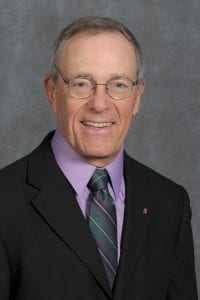
“In ’93, so many kids were being bullied in school, afraid to come to the parade,” he said. “We didn’t have any student groups that marched in that parade. Now they make up more than 50 percent of that parade.”
This year, the parade was set to move to Jones Beach after a dispute with Long Beach over a $70,000 fee the LGBT Network said other organizations did not have to pay for similar events. Leaders of the parade are hoping for a renewed involvement come 2021, which will be the 31st pride parade and its true 30-year anniversary.
But the fight for equality is not one lane for just one group of people. Those who spoke about their experience with the first pride parade all identified with those marching against police brutality and racism today.
Gustavson said things changed for the better in the past three decades, such as general awareness along with much more acceptance at the grade school level, but some things have not progressed nearly enough. For white gay people, she said things are “a lot better.” For gay people of color, trans people and especially trans people of color, there are way too many problems with prejudice both on the governmental and societal levels.
“It was as it should have been, a celebration.”
— Douglas Futuyma
“I don’t want to see violence, I never want to see violence,” she said. “But there are times when that’s what gets people talking and thinking and there are always people who will never understand why riots happen and why they destroy their own sh**. They will never understand that, and it’s passionate. When you’re passionate and you’re screaming because you’re afraid for your life, that it doesn’t really matter so much what gets ruined as far as ‘things’ go. Things are things. We’re fighting for our lives here, we’re fighting for our sanity, we’re fighting for our ability to walk in society without fear of being beaten to death because you’re a ‘fag,’ or because you’re Black.”
Henaghan, despite saying he has occasional bouts with pessimism, does believe the world is heading in the right direction. His partner for 23 years became his husband eight years ago, just a year after the Supreme Court’s gay marriage decision. For the people marching in the streets today, he said many of those who spoke out against that march in ’91 are the same people or the ideological descendants of those who verbally harassed them 30 years ago.
“Many people will not let go of that hate they have, whether it’s for people of color, gays or lesbians, trans people, there are many people in our society they will not let go of that hate,” Henagan said. “They will fight you to the end. We still won’t stand for it.”

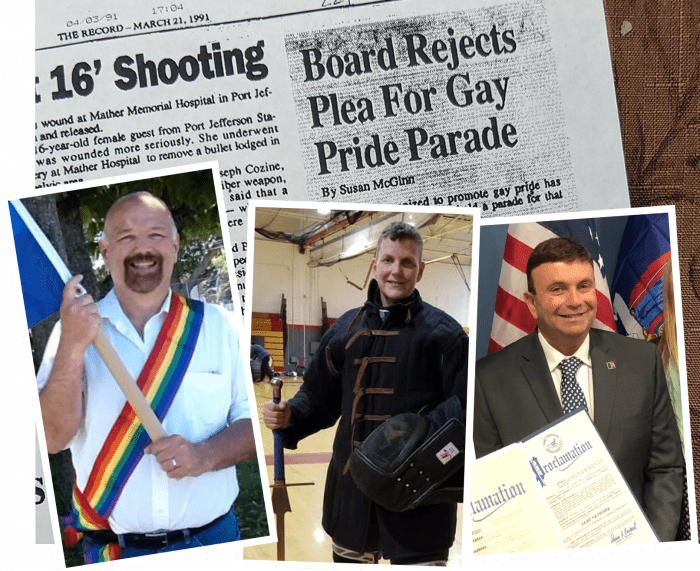
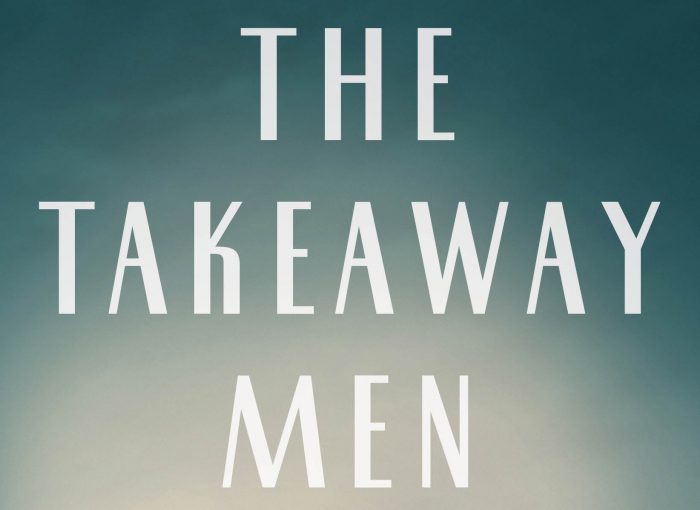
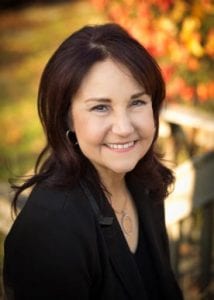
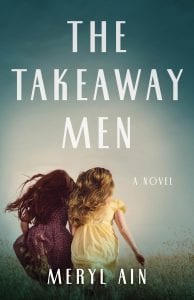 The Lubinskis remain with Izzy and Faye as the girls grow up. Aron has actively chosen not to reveal his nor Edyta’s history to the girls.
The Lubinskis remain with Izzy and Faye as the girls grow up. Aron has actively chosen not to reveal his nor Edyta’s history to the girls.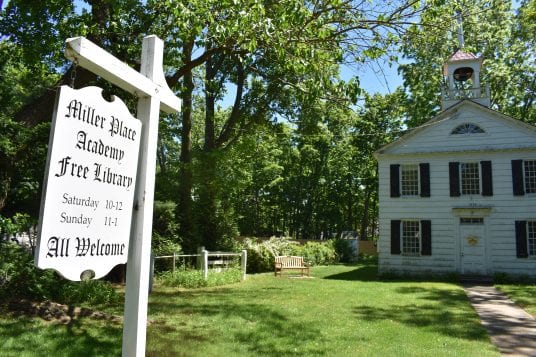
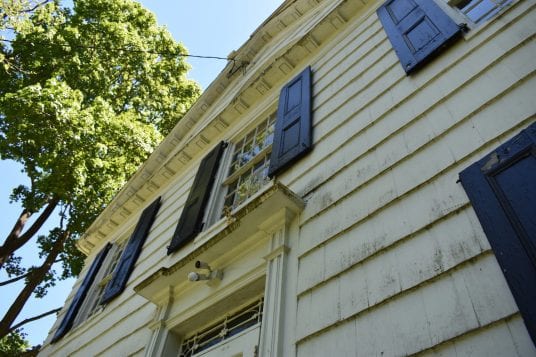
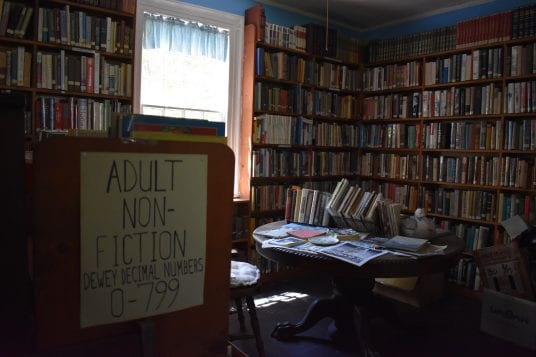
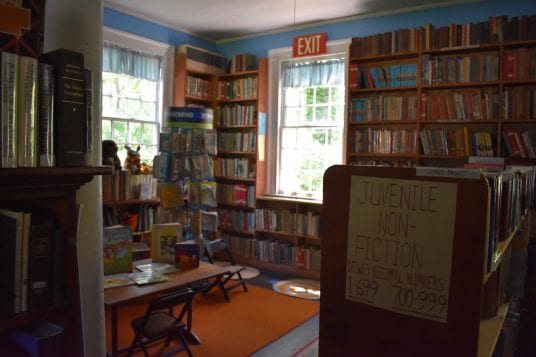

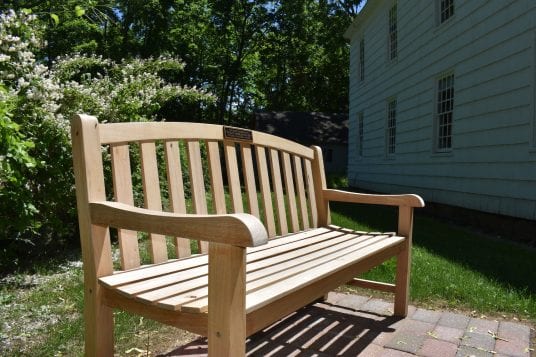

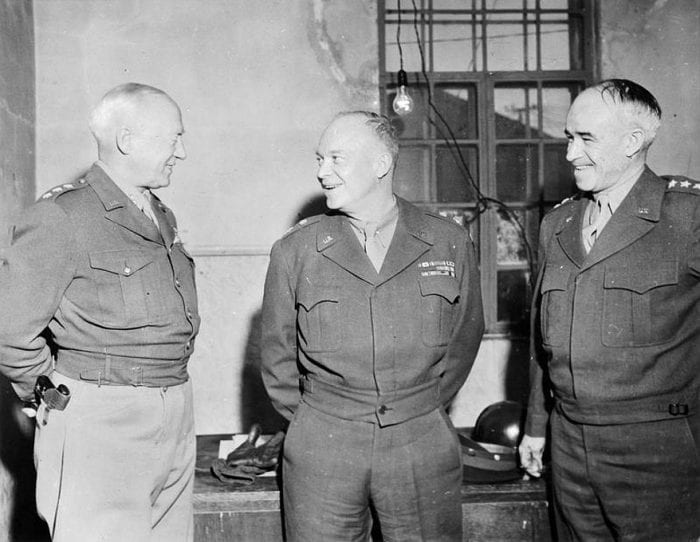
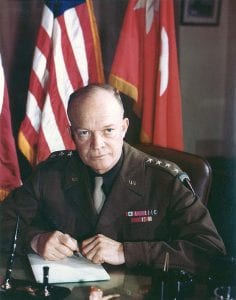


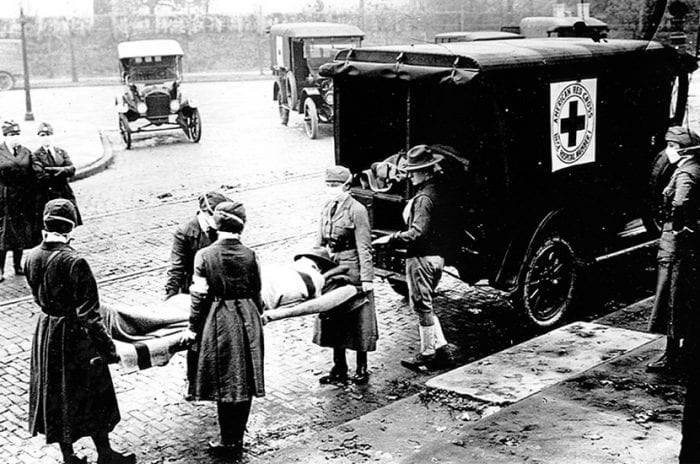
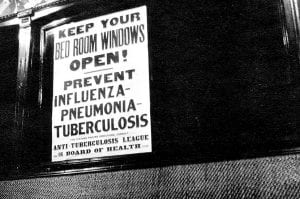
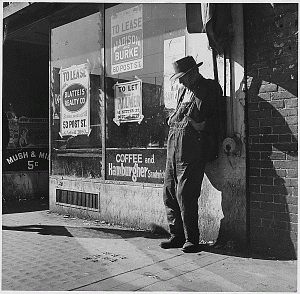
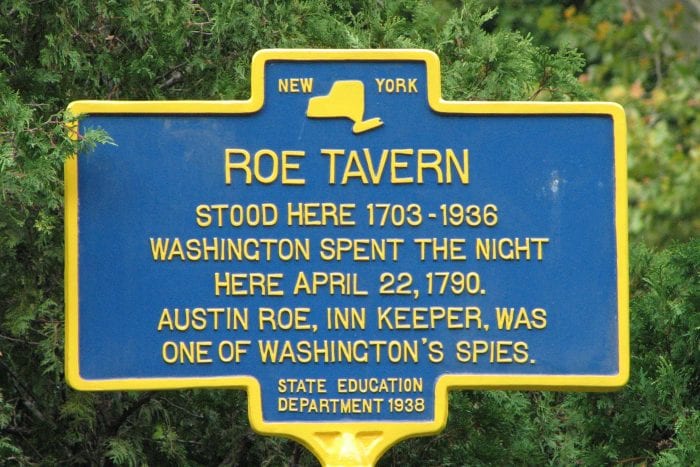
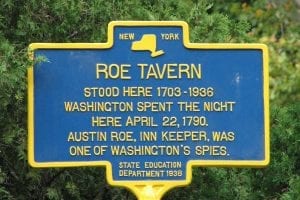

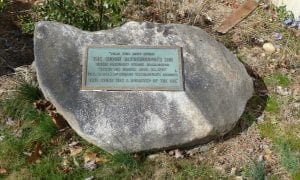

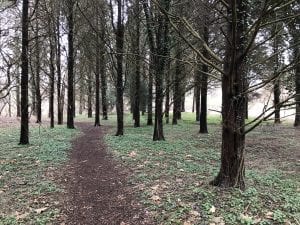
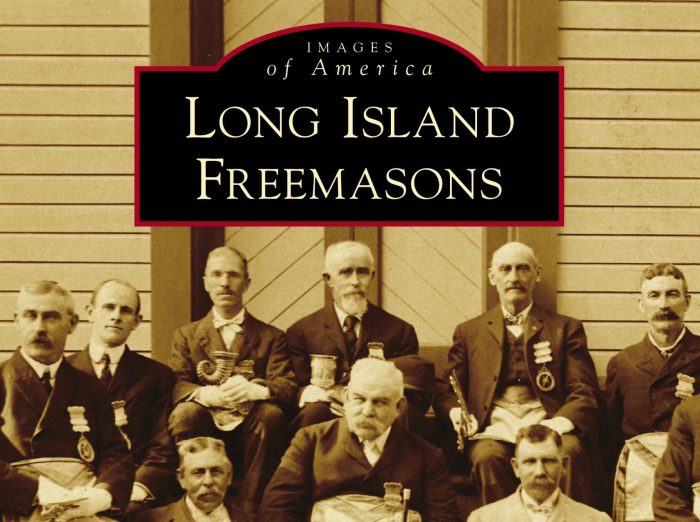
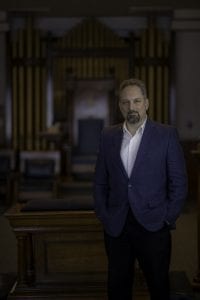
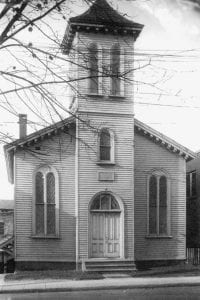
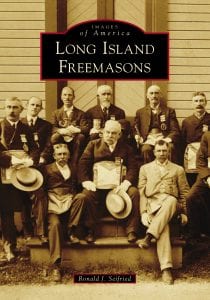 The Hawkins-Mount Homestead, in Stony Brook, was used several times in 1802 as a meeting place for the Suffolk Lodge; its owner, Major Jonas Hawkins, was a member of the Culper Spy Ring during the American Revolution. Chief Crazy Bull, grandson to the famous Sioux Chief Sitting Bull of the Hunkpapa Lakota Tripe, was a member of the Suffolk No. 60 Lodge, which is still located on Main Street in Port Jefferson.
The Hawkins-Mount Homestead, in Stony Brook, was used several times in 1802 as a meeting place for the Suffolk Lodge; its owner, Major Jonas Hawkins, was a member of the Culper Spy Ring during the American Revolution. Chief Crazy Bull, grandson to the famous Sioux Chief Sitting Bull of the Hunkpapa Lakota Tripe, was a member of the Suffolk No. 60 Lodge, which is still located on Main Street in Port Jefferson.


